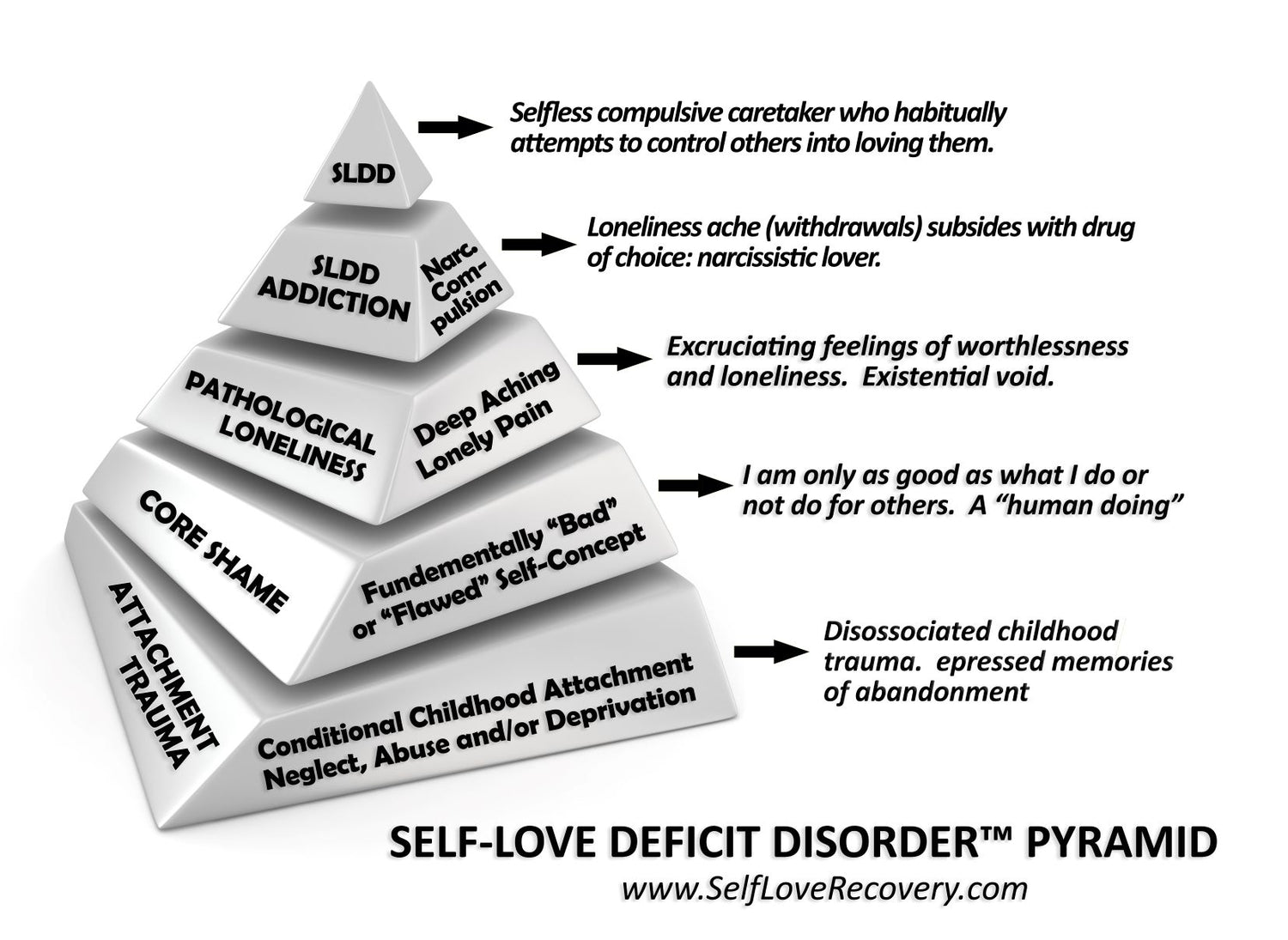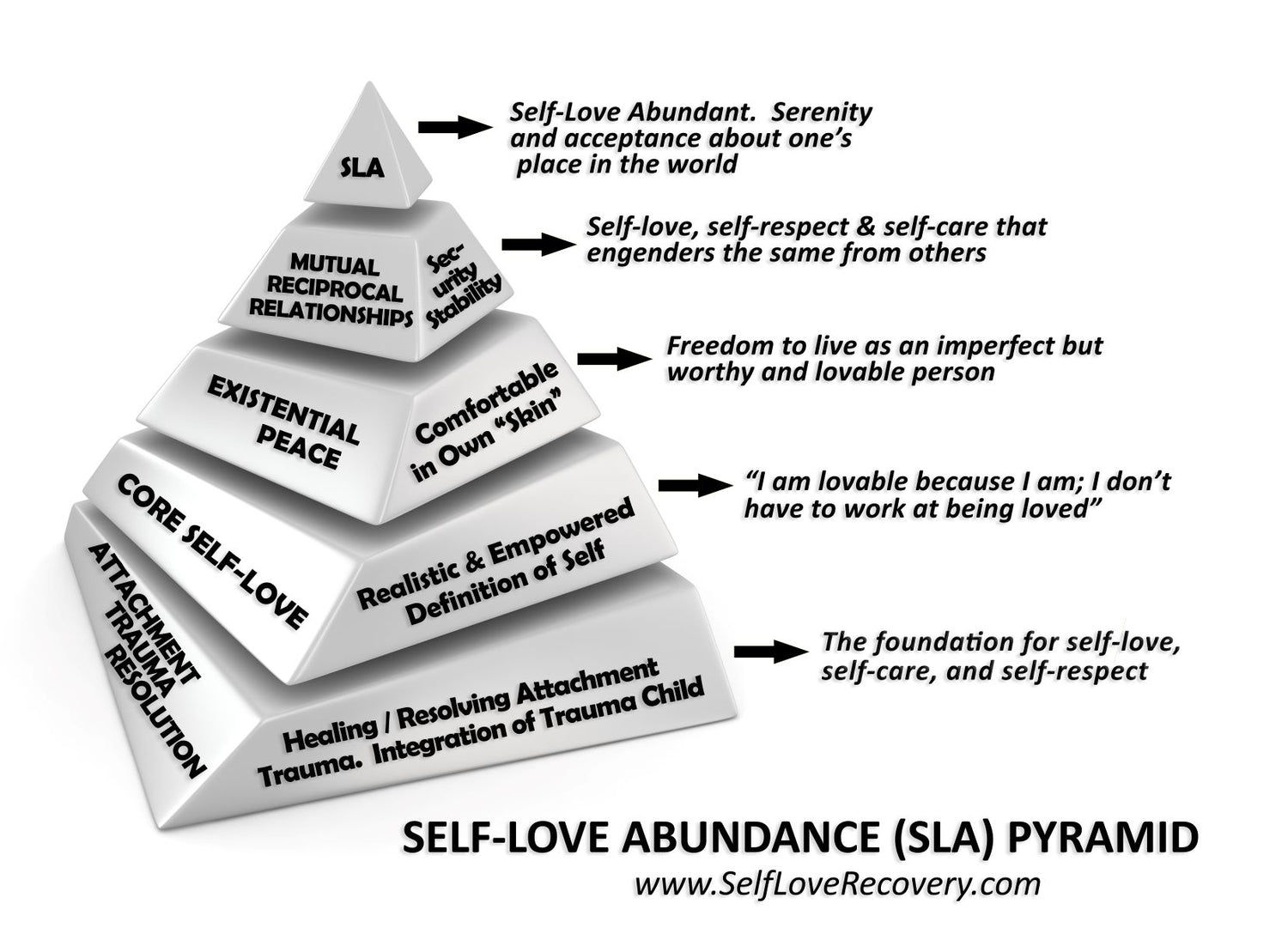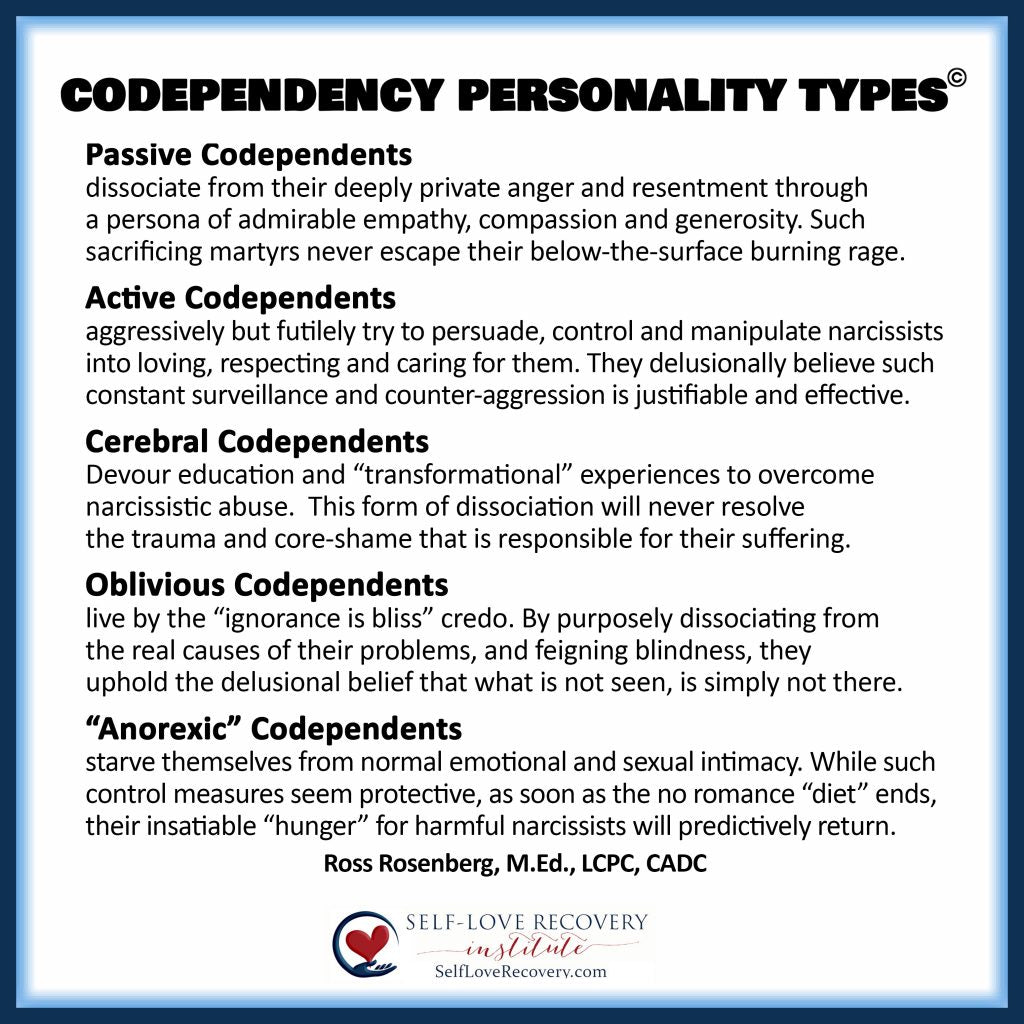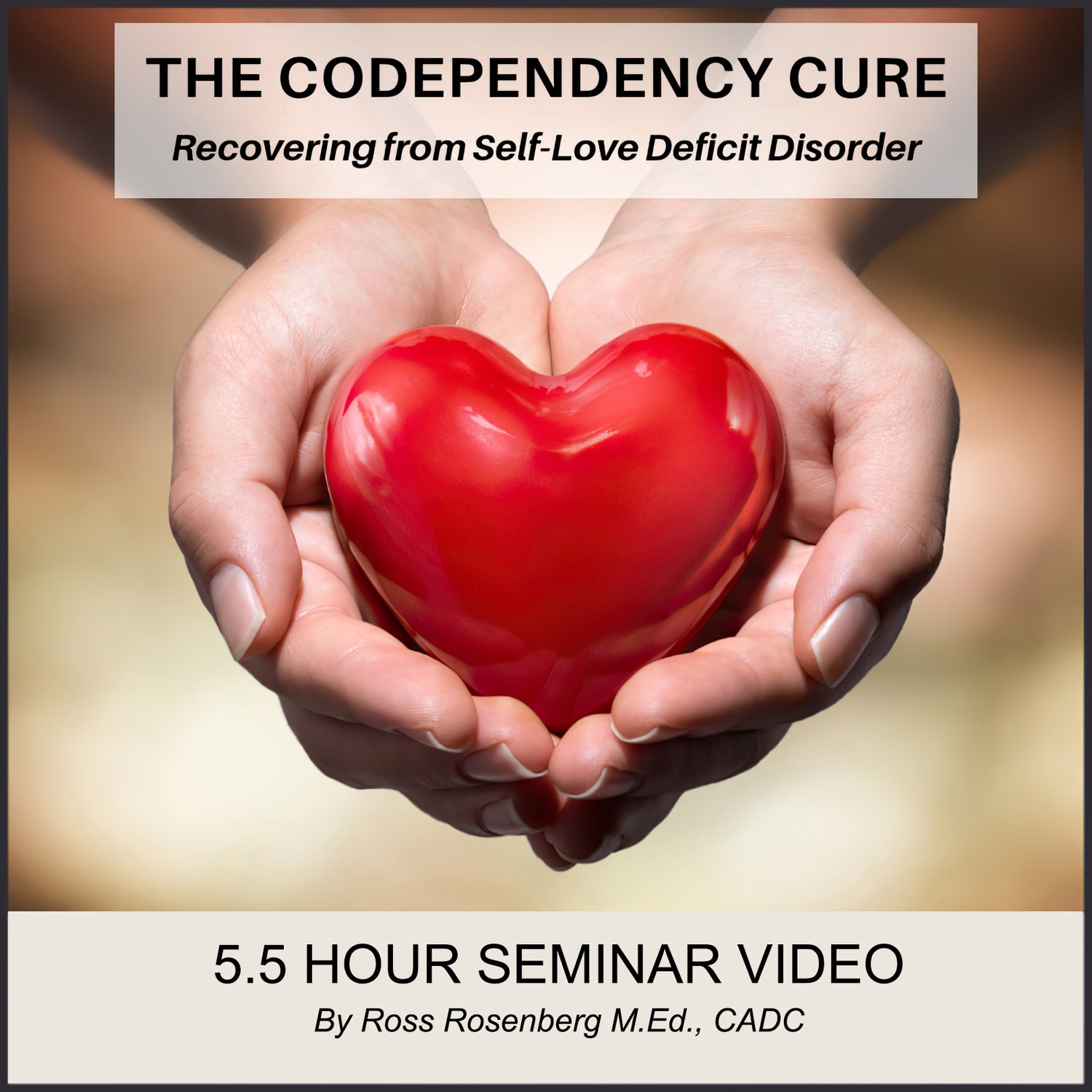Introduction to Self-Love Deficit Disorder and Self-Love Abundance

The SLDD and SLA Pyramids
People find themselves chronically in unhealthy and unbalanced relationships, where they give most of the love, respect, and care; only to receive nothing in return. Despite the pain, they stay in this unhappy and toxic dance, because they are afraid of feeling the intense shame and pathological loneliness that will arise if they leave.
Often this has been called codependency, however, a more appropriate name is Self-Love Deficit Disorder or SLDD. On the SLDD pyramid, codependency is a mere symptom of not loving oneself. Codependency is not what needs to be treated, rather the root cause needs to be addressed.
The pyramid demonstrates why someone with codependency/SLDD does not respond to traditional psychotherapy, as the problem that is treated is not the actual cause of the disorder. This invisible and treatment-resistant addiction cannot be remedied unless its underlying causes are addressed and solved. In other words, by understanding that codependency/SLDD is just a bunch of symptoms of much more complicated and fundamental psychological problems, the problem can never be solved.

It all begins with attachment trauma, the root cause. This often occurs when a child is raised by a narcissistic parent who does not allow them to feel loved, respected, cared for, and safe. Love is merely conditional and judgmental.
This trauma is then responsible for causing core shame. It is a distorted belief of being fundamentally bad or flawed. Such toxic shame reduces a person to feeling only good when they take care of others while ignoring themselves.
Loving someone, while being invisible creates pathological loneliness. Deep bone aching emotional pain. This is the excruciating codependency/SLDD addiction withdrawal pain that reduces one to feeling invisible, worthless, and unlovable.
The pain of it is simply unbearable, hence the person with SLDD (codependent) is uniquely prone to codependency addiction which is the desperate need of a relationship that will make the lonely pain go away. The pathologically narcissistic romantic interest becomes their drug of choice which never remedies their loneliness and lifelong pursuit of love.
There is however a cure for Self-Love Deficit Disorder (or codependency): the achievement of self-love abundance. This is the exact opposite of each of the SLDD pyramid’s levels.


